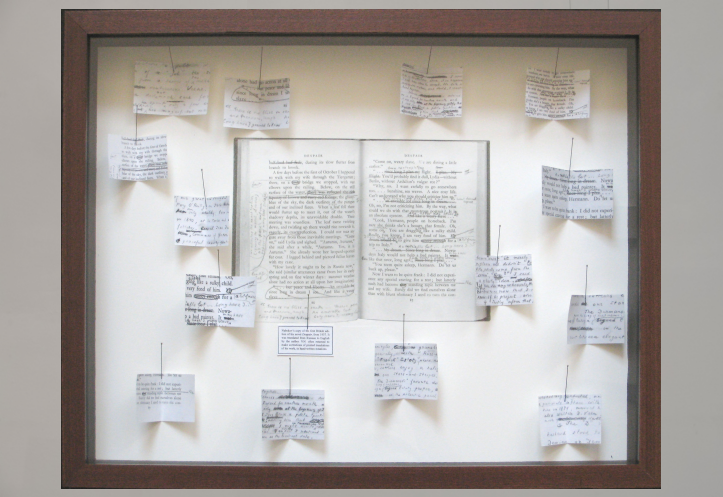ROOM 5
— Language: Poetry,
— Language: Poetry,
— Language: Poetry,
It would not be possible to address the relationship between Brazil and Portugal over time without reflecting upon the fact that a great part of the people from these two countries, as well as the people from seven African and Asian countries, are, on a daily basis, reinventing countless forms of this language in common. This fifth and final part of this exhibition deals with language as a vibrant and potent
dimension that is always transforming and being transformed by the ways people who use it while they live, think, and imagine. We are interested in reflecting about the revolutionary, insurgent, and inspiring potential of unconventional uses of language, as well as investigating the experimental exercises of verbal communication and their graphic representations. Here, we study language as a territory without
arbitrary boundaries, without limits to its expansions and implosions, without hierarchization. In this final part of the exhibition, we think about language as a landscape where new plants, rivers, constructions, technologies, and dimensions are born. We are mainly interested in how the poetic exploration of language’s plasticity can offer unique paths to embrace memories and imagine other futures.
It would not be possible to address the relationship between Brazil and Portugal over time without reflecting upon the fact that a great part of the people from these two countries, as well as the people from seven African and Asian countries, are, on a daily basis, reinventing countless forms of this language in common. This fifth and final part of this exhibition deals with language as a vibrant and potent
dimension that is always transforming and being transformed by the ways people who use it while they live, think, and imagine. We are interested in reflecting about the revolutionary, insurgent, and inspiring potential of unconventional uses of language, as well as investigating the experimental exercises of verbal communication and their graphic representations. Here, we study language as a territory without
arbitrary boundaries, without limits to its expansions and implosions, without hierarchization. In this final part of the exhibition, we think about language as a landscape where new plants, rivers, constructions, technologies, and dimensions are born. We are mainly interested in how the poetic exploration of language’s plasticity can offer unique paths to embrace memories and imagine other futures.
It would not be possible to address the relationship
between Brazil and Portugal over time without
reflecting upon the fact that a great part of the
people from these two countries, as well as the
people from seven African and Asian countries, are,
on a daily basis, reinventing countless forms of this
language in common.
This fifth and final part of this
exhibition deals with language as a vibrant and potent
dimension that is always transforming and being
transformed by the ways people who use it while
they live, think, and imagine. We are interested in
reflecting about the revolutionary, insurgent, and
inspiring potential of unconventional uses of language,
as well as investigating the experimental exercises of verbal
communication and their graphic representations.
Here, we study language as a territory without
arbitrary boundaries, without limits to its
expansions and implosions, without hierarchization.
In this final part of the exhibition, we think about
language as a landscape where new plants, rivers,
constructions, technologies, and dimensions are
born. We are mainly interested in how the poetic
exploration of language’s plasticity can offer unique
paths to embrace memories and imagine other
futures.

Bloom, Barbara | Nabokov Butterfly Boxes (VN Correction Case) | 1998-2008

Bloom, Barbara | Nabokov Butterfly Boxes (VN Correction Case) | 1998-2008

Bloom, Barbara | Nabokov Butterfly Boxes (VN Correction Case) | 1998-2008
The Argentinian writer Julio Cortázar in his
masterpiece ‘Rayuela’ spoke of memory as “a
language of feelings, a dictionary of faces and days
and smells that come back as verbs and adjectives
in discourse.” We’re dealing here precisely with this
frictional and fictional relationship between
language, sensitivity, and imagination, an lively and
impregnating crossroads that is poetry itself.
The journey proposed by this exhibition concludes
itself in this group of works that deal with the
phenomenon of verbal communication, with the
creation of language and the efforts of translation,
works that exist as visual and spatial experiments
with writing and others that point to the capacity of
language to go beyond itself to imagine the
unthinkable. Based on the recognition of the
importance of language for the relationship
between different peoples, this exhibition
culminates in a high praise of poetry and fantasy as
instruments for building futures.